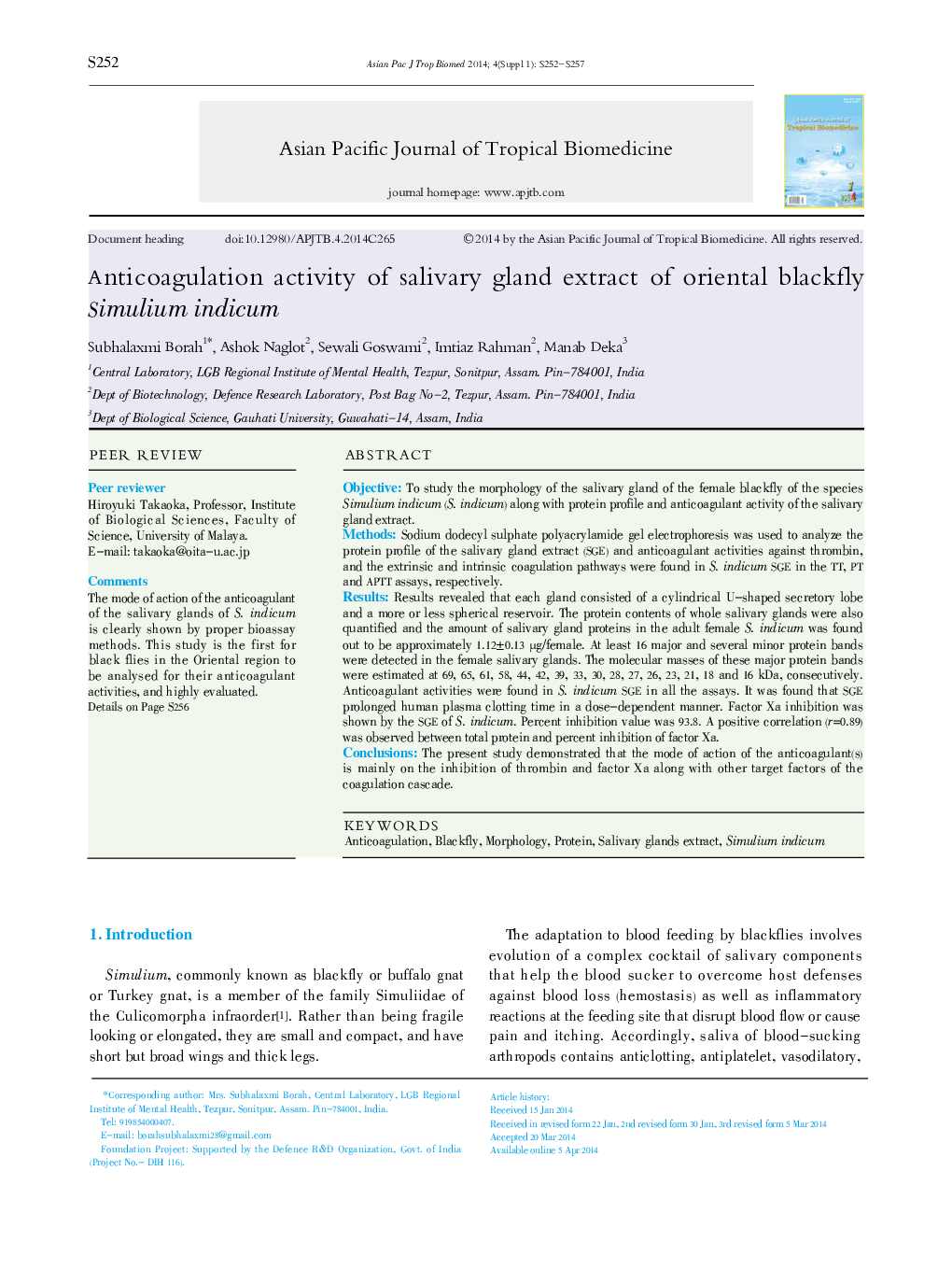| Article ID | Journal | Published Year | Pages | File Type |
|---|---|---|---|---|
| 2032807 | Asian Pacific Journal of Tropical Biomedicine | 2014 | 6 Pages |
ABSTRACTObjectiveTo study the morphology of the salivary gland of the female blackfly of the species Simulium indicum (S. indicum) along with protein profile and anticoagulant activity of the salivary gland extract.MethodsSodium dodecyl sulphate polyacrylamide gel electrophoresis was used to analyze the protein profile of the salivary gland extract (SGE) and anticoagulant activities against thrombin, and the extrinsic and intrinsic coagulation pathways were found in S. indicum SGE in the TT, PT and APTT assays, respectively.ResultsResults revealed that each gland consisted of a cylindrical U-shaped secretory lobe and a more or less spherical reservoir. The protein contents of whole salivary glands were also quantified and the amount of salivary gland proteins in the adult female S. indicum was found out to be approximately 1.12 ± 0.13 μg/female. At least 16 major and several minor protein bands were detected in the female salivary glands. The molecular masses of these major protein bands were estimated at 69, 65, 61, 58, 44, 42, 39, 33, 30, 28, 27, 26, 23, 21, 18 and 16 kDa, consecutively. Anticoagulant activities were found in S. indicum SGE in all the assays. It was found that SGE prolonged human plasma clotting time in a dose-dependent manner. Factor Xa inhibition was shown by the SGE of S. indicum. Percent inhibition value was 93.8. A positive correlation (r=0.89) was observed between total protein and percent inhibition of factor Xa.ConclusionsThe present study demonstrated that the mode of action of the anticoagulant(s) is mainly on the inhibition of thrombin and factor Xa along with other target factors of the coagulation cascade.
